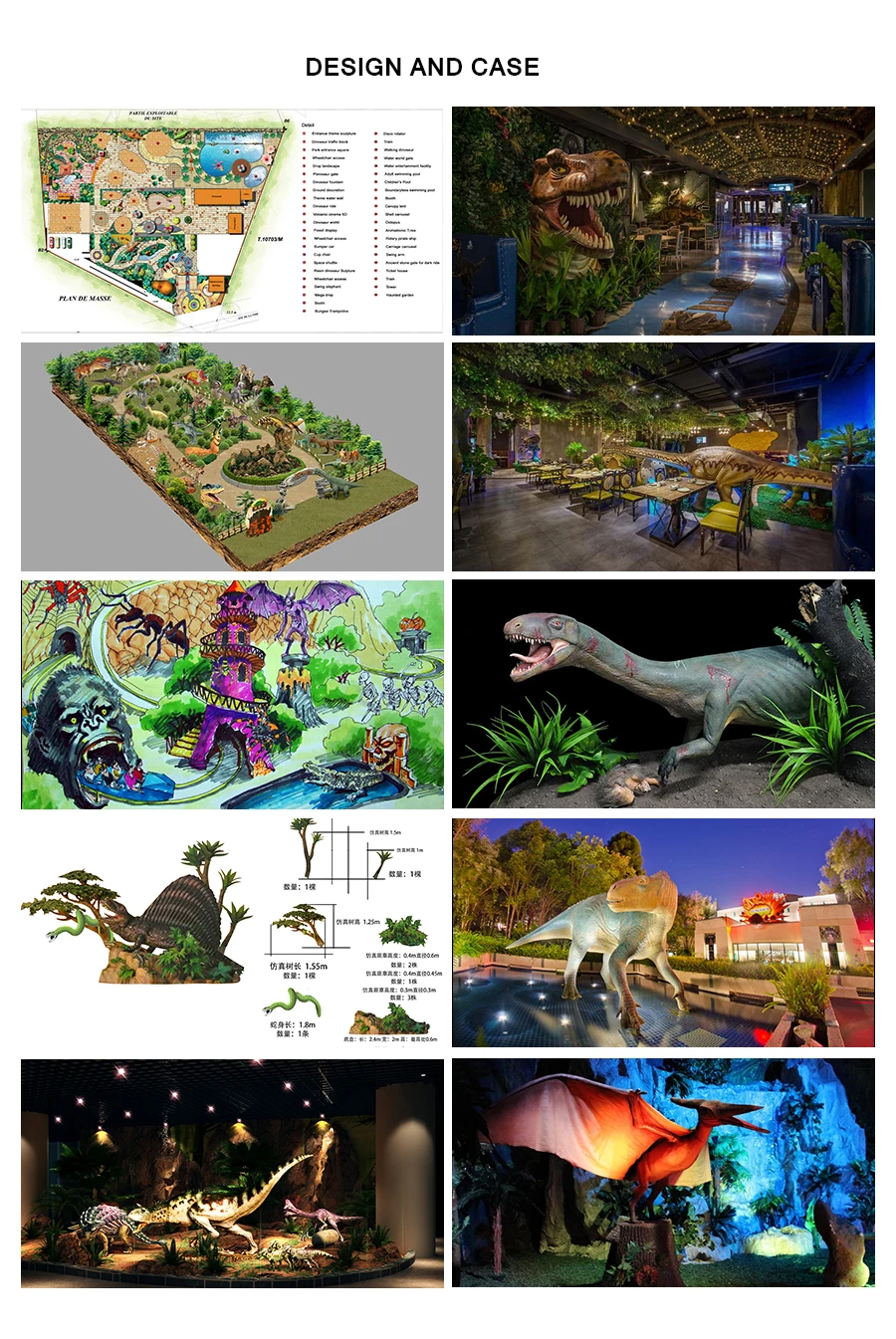Life-size realistic hunting primitive man statue for theme park

 MORE INFORMATION
MORE INFORMATION
| Input | AC 110/220V ,50-60HZ |
| Plug | Euro plug / British Standard / SAA / C-UL / or depends on request |
| Control mode | Automatic / Infrared / remote / coin / Button / Voice / Touch / Temperature / shooting etc. |
| Waterproofing grade | IP66 |
| Working condition | Sunshine, rain, seaside, 0~50℃(32℉~82℉) |
| Optional function | Sound can be increased to 128 kinds Smoke,/ water. / bleed / smell / change color / change lights / LED screen etc interactive(Location tracking) / conversine(currently only Chinese) |
AFTER-SALE SERVICE
| Service | Need be cut for shipping,fwill provide a detailed installation manual. |
| Warranty | We provide 2 years warranty for all of our antrimatronic models, the warranty pieriod starts from freight arrives at destination port. Our warranty covers motor, reducer, control box, etc. |






 primitive man realistic statue theme park
most vivid statue highly simulated sculpture realistic primitive man with tool real-size model lifelike primitive man lifelike hunting primitive man for theme park real-size primitive man realistic man statue realistic simulation sculpture of primitive man animatronic character animatronics animatornics figure customized primitive man life-size animatronic figure real size human vivid man model cave man
The caveman is a stock character representative of primitive humans in the Paleolithic. The popularization of the type dates to the early 20th century, when Neanderthals were influentially described as "simian" or "ape-like" by Marcellin Boule and Arthur Keith.
The term "caveman" has its taxonomic equivalent in the now-obsolete binomial classification of Homo troglodytes (Linnaeus, 1758).
Cavemen are typically portrayed as wearing shaggy animal hides, and capable of cave painting like behaviorally modern humans of the last glacial period. They are often shown armed with rocks or cattle bone clubs that are also adorned with rocks, and are portrayed as unintelligent and aggressive. Popular culture also frequently represents cavemen as living with or alongside dinosaurs, even though non-avian dinosaurs became extinct at the end of the Cretaceous period, 66 million years before the emergence of the Homo sapiens species.
The image of them living in caves arises from the fact that caves are where the preponderance of artifacts have been found from European Stone Age cultures, although this most likely reflects the degree of preservation that caves provide over the millennia rather than an indication of their typical form of shelter. Until the last glacial period, the great majority of humans did not live in caves, being nomadic hunter-gatherer tribes living in a variety of temporary structures, such as tentsand wooden huts (e.g., at Ohalo). A few genuine cave dwellings did exist, however, such as at Mount Carmel in Israel.
Stereotypical cavemen have traditionally been depicted wearing smock-like garments made from the skin of other animals and held up by a shoulder strap on one side, and carrying large clubs approximately conical in shape. They often have grunt-like names, such as Ugg and Zog
primitive man realistic statue theme park
most vivid statue highly simulated sculpture realistic primitive man with tool real-size model lifelike primitive man lifelike hunting primitive man for theme park real-size primitive man realistic man statue realistic simulation sculpture of primitive man animatronic character animatronics animatornics figure customized primitive man life-size animatronic figure real size human vivid man model cave man
The caveman is a stock character representative of primitive humans in the Paleolithic. The popularization of the type dates to the early 20th century, when Neanderthals were influentially described as "simian" or "ape-like" by Marcellin Boule and Arthur Keith.
The term "caveman" has its taxonomic equivalent in the now-obsolete binomial classification of Homo troglodytes (Linnaeus, 1758).
Cavemen are typically portrayed as wearing shaggy animal hides, and capable of cave painting like behaviorally modern humans of the last glacial period. They are often shown armed with rocks or cattle bone clubs that are also adorned with rocks, and are portrayed as unintelligent and aggressive. Popular culture also frequently represents cavemen as living with or alongside dinosaurs, even though non-avian dinosaurs became extinct at the end of the Cretaceous period, 66 million years before the emergence of the Homo sapiens species.
The image of them living in caves arises from the fact that caves are where the preponderance of artifacts have been found from European Stone Age cultures, although this most likely reflects the degree of preservation that caves provide over the millennia rather than an indication of their typical form of shelter. Until the last glacial period, the great majority of humans did not live in caves, being nomadic hunter-gatherer tribes living in a variety of temporary structures, such as tentsand wooden huts (e.g., at Ohalo). A few genuine cave dwellings did exist, however, such as at Mount Carmel in Israel.
Stereotypical cavemen have traditionally been depicted wearing smock-like garments made from the skin of other animals and held up by a shoulder strap on one side, and carrying large clubs approximately conical in shape. They often have grunt-like names, such as Ugg and Zog

+86-813-2104677

info@sanherobot.com

+86-13990010824

No.13 Huixin Road, Yantan Town, Yantan District, Zigong City, Sichuan Province, China